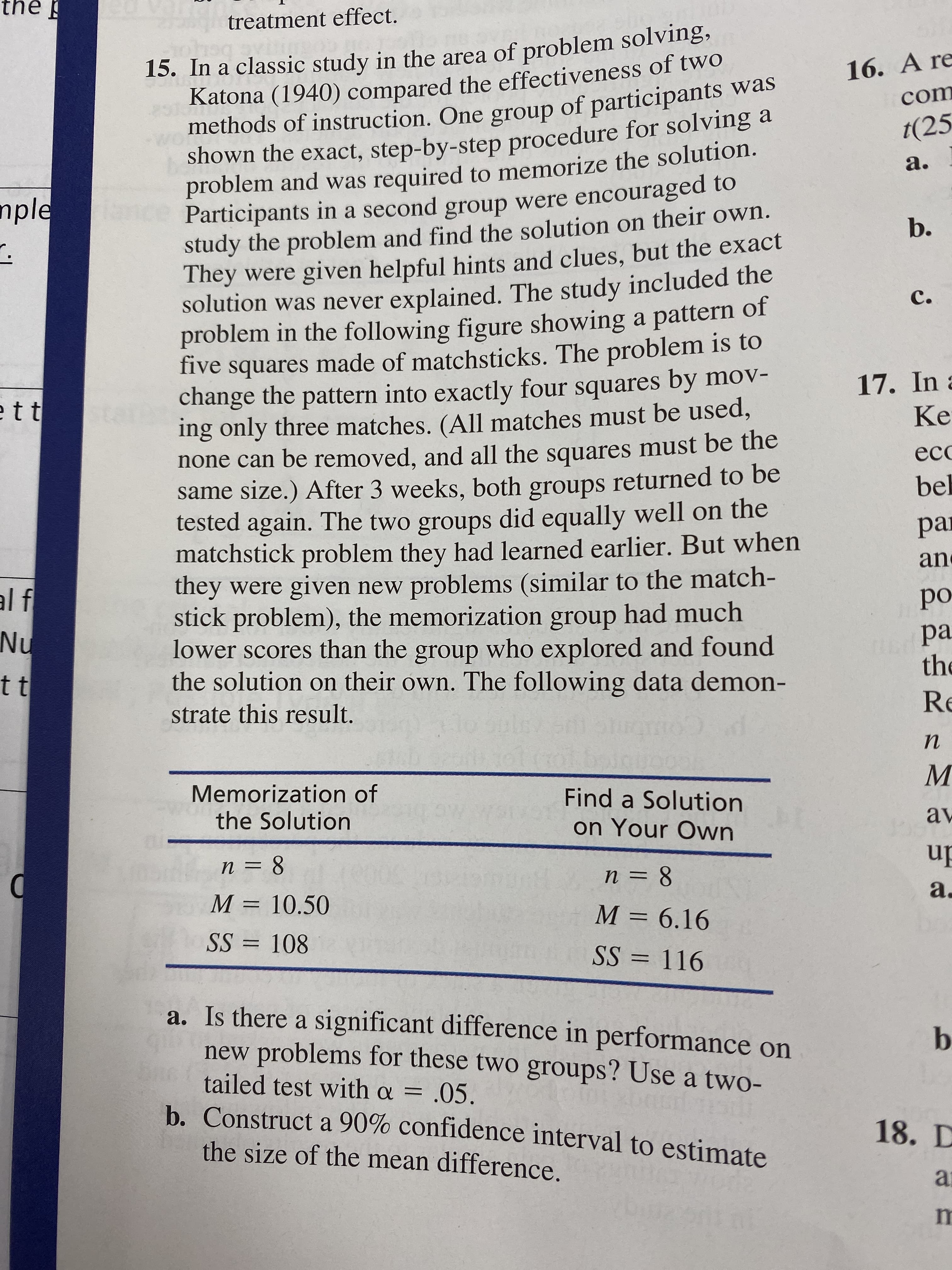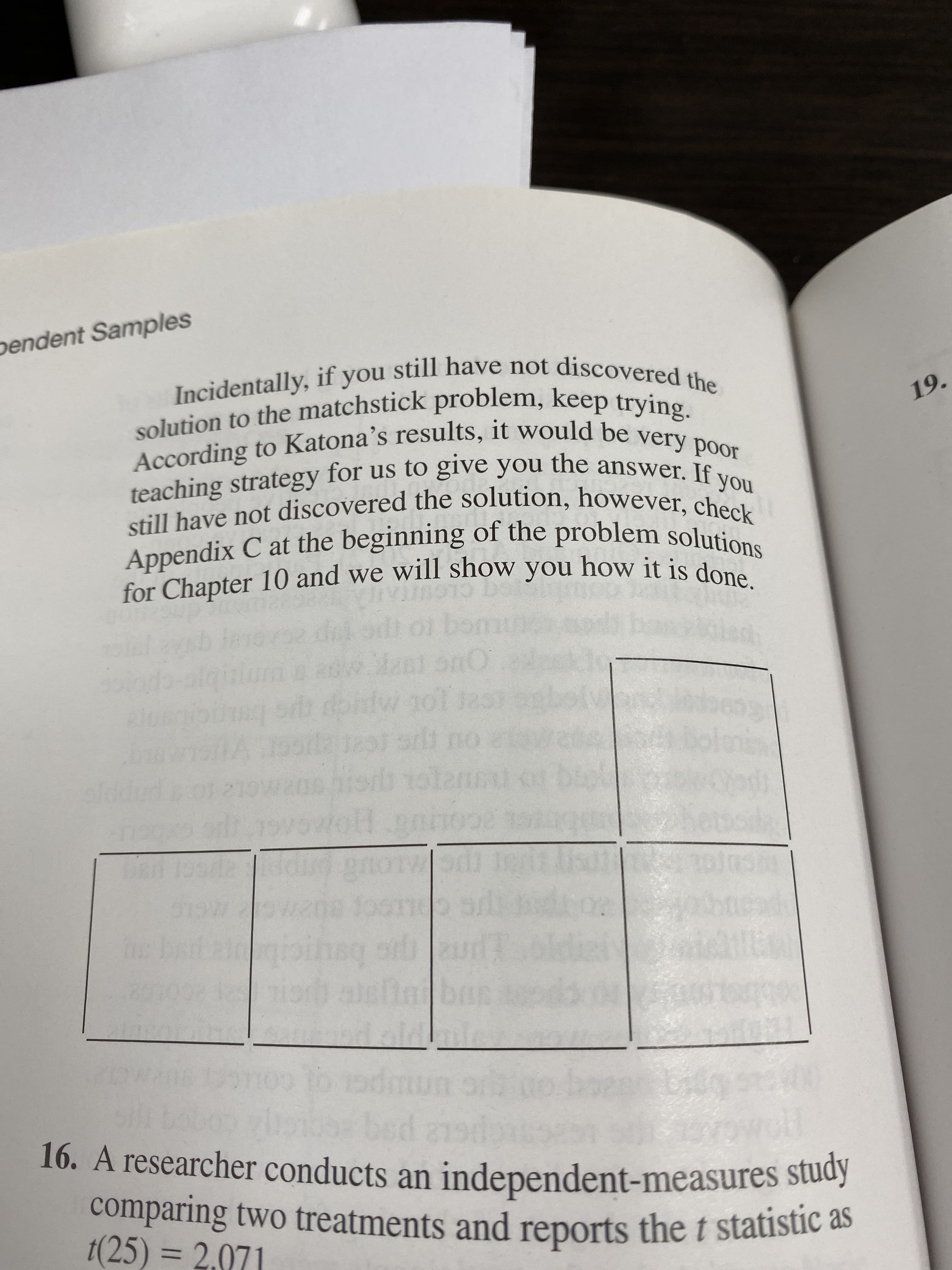the treatment effect. 15. In a classic study in the area of problem solving, Katona (1940) compared the effectiveness of two methods of instruction. One group of participants was shown the exact, step-by-step procedure for solving a problem and was required to memorize the solution. 106 16. A re com t(25 а. Participants in a second group were encouraged to study the problem and find the solution on their own. They were given helpful hints and clues, but the exact solution was never explained. The study included the problem in the following figure showing a pattern of five squares made of matchsticks. The problem is to change the pattern into exactly four squares by mov- ing only three matches. (All matches must be used, none can be removed, and all the squares must be the same size.) After 3 weeks, both groups returned to be tested again. The two groups did equally well on the matchstick problem they had learned earlier. But when they were given new problems (similar to the match- stick problem), the memorization group had much lower scores than the group who explored and found the solution on their own. The following data demon- nple b. с. 17. In Ke tt ес bel рa an al f Nu ро ра th t t Re strate this result. п Memorization of the Solution Find a Solution av on Your Own п %3D 8 n = 8 а. М 3 10.50 M 6.16 SS 108 SS 116 a. Is there a significant difference in performance on new problems for these two groups? Use a two- b tailed test with a = .05. b. Construct a 90% confidence interval to estimate 18. D the size of the mean difference. a pendent Samples Incidentally, if you still have not discovered the solution to the matchstick problem, keep trying. According to Katona's results, it would be very poor teaching strategy for us to give you the answer. If still have not discovered the solution, however, check Appendix C at the beginning of the problem solutions for Chapter 10 and we will show you how it is done. 19. you 391 Sast onO wo1 12 T891 Horb Wot o IO gnon 2 r T (A o bed a1 16. A researcher conducts an independent-measures study comparing two treatments and reports the t statistic as 1(25) = 2.071
Unitary Method
The word “unitary” comes from the word “unit”, which means a single and complete entity. In this method, we find the value of a unit product from the given number of products, and then we solve for the other number of products.
Speed, Time, and Distance
Imagine you and 3 of your friends are planning to go to the playground at 6 in the evening. Your house is one mile away from the playground and one of your friends named Jim must start at 5 pm to reach the playground by walk. The other two friends are 3 miles away.
Profit and Loss
The amount earned or lost on the sale of one or more items is referred to as the profit or loss on that item.
Units and Measurements
Measurements and comparisons are the foundation of science and engineering. We, therefore, need rules that tell us how things are measured and compared. For these measurements and comparisons, we perform certain experiments, and we will need the experiments to set up the devices.
Number 15


Trending now
This is a popular solution!
Step by step
Solved in 2 steps with 2 images









